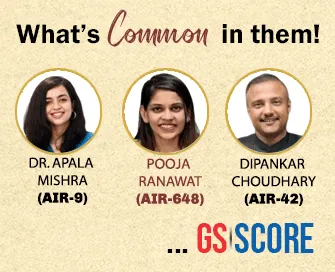

3rd February 2025 (12 Topics)
Context
The Union Budget 2025, aims to address macroeconomic challenges like high taxes, unemployment, subdued private investment, and fiscal vulnerabilities. It outlines key policy measures in agriculture, manufacturing, MSMEs, social welfare, and infrastructure to achieve the vision of Viksit Bharat. However, there are concerns regarding the feasibility of fiscal consolidation, the impact of tax cuts, and the effectiveness of long-term economic goals.
Fiscal Consolidation and Revenue Projections:
- Ambitious Fiscal Targets: The Budget sets a fiscal deficit target of 4.4% of GDP for FY26. Achieving this depends on optimistic revenue projections, such as an 11.2% growth in total tax revenues and a 14.4% increase in income tax collections.
- Risks in Borrowing: The Budget plans Rs 11.54 lakh crore in net market borrowings, which could crowd out private capital and pose risks in the current low-credit demand environment.
- Asset Monetisation Challenges: The success of the second asset monetisation plan is critical, but concerns about the underperformance of the previous plan raise doubts on its effectiveness.
Tax Revisions and Middle-Class Relief:
- Tax Cuts Impact: The reduction in income tax liabilities and raising the exemption limit up to Rs 12 lakh will provide relief to the middle class but result in a Rs 1 lakh crore shortfall in direct tax revenue.
- Concerns on Tax Base Erosion: The decline in household savings and the reduced tax base raise questions about the long-term sustainability of these tax cuts and their impact on funding developmental initiatives.
- Limited Public Investment Capacity: While tax cuts may boost disposable income, the strain on fiscal capacity could hinder the government’s ability to fund essential infrastructure and social welfare programs.
Focus on Manufacturing and Agriculture:
- Manufacturing Growth Goals: The Budget emphasizes improving the manufacturing sector’s contribution to GDP (currently 17%) through enhanced credit for MSMEs and a National Manufacturing Mission. However, structural issues like regulatory inefficiencies and low innovation remain unaddressed.
- Agriculture Challenges: The Budget introduces measures such as Kisan Credit Card (KCC) loan limits and climate-resilient initiatives, but these fall short of addressing deeper market inefficiencies and price volatility in agriculture.
- Lack of Export Strategy: While there are efforts to diversify exports, the Budget's focus on trade facilitation and export credit support for MSMEs lacks scale, especially given challenges like a depreciating rupee and declining forex reserves.
Practice Question:
Q. Evaluate the fiscal measures announced in the Union Budget 2025. How do the proposed tax revisions, asset monetisation strategies, and manufacturing sector reforms address India’s macroeconomic challenges?
More Articles

